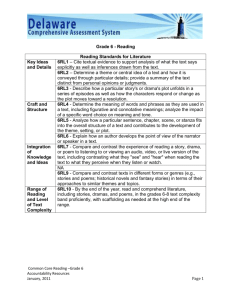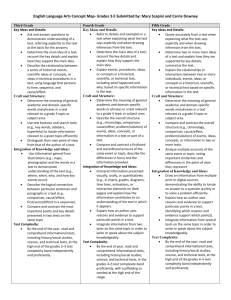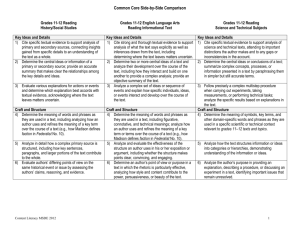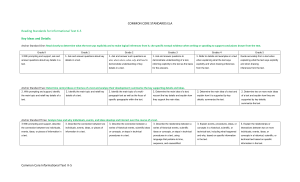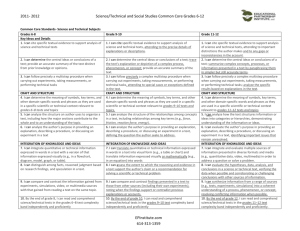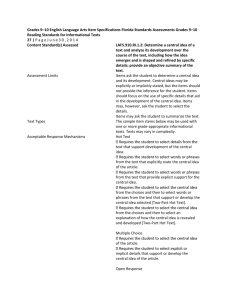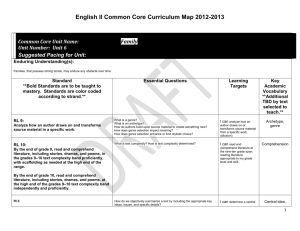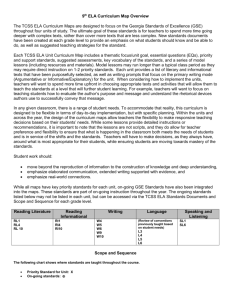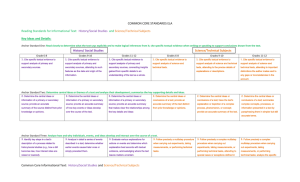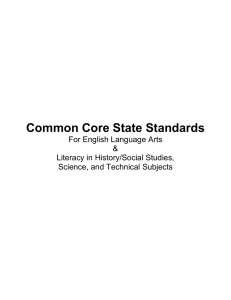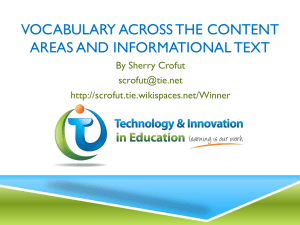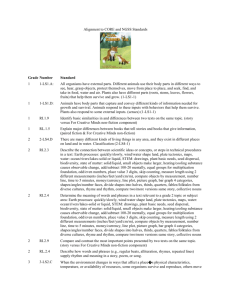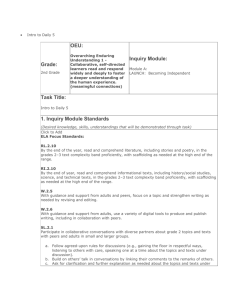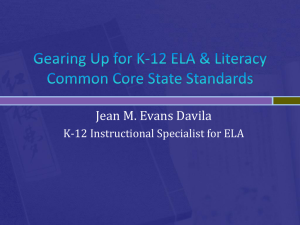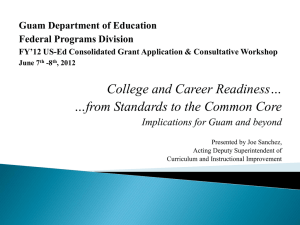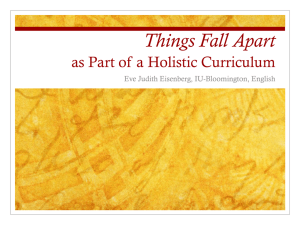Ramping Up for Complex Texts
advertisement
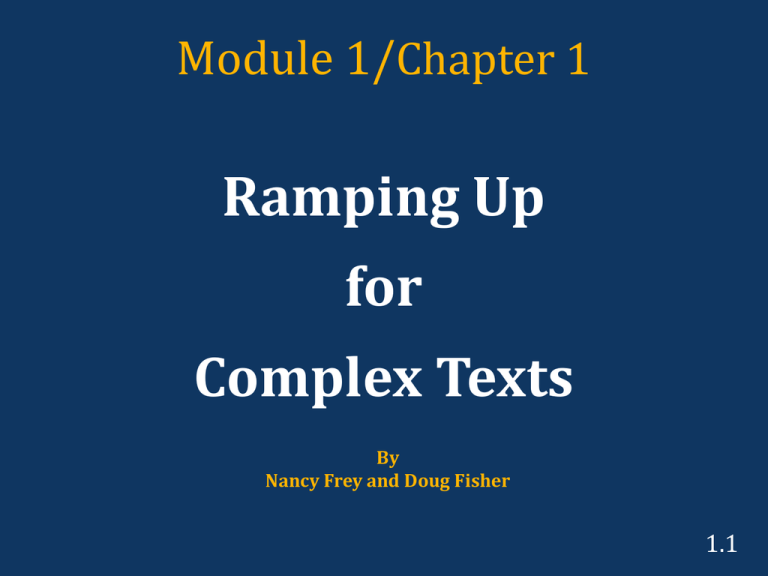
Module 1/Chapter 1 Ramping Up for Complex Texts By Nancy Frey and Doug Fisher 1.1 Just giving students complex texts doesn’t mean they will read and understand them. 1.2 Scaffolded Instruction Knowing when to transfer cognitive responsibility to students Reconsidering text types and their purpose 1.3 Directions for Examining Learning Progressions of Anchor Standard 10 1. Work in groups of four to six. 2. Each participant will highlight the words or phrases that show how instruction and learning increase through the grades to meet the standard. 3. Discuss the subtleties of changes and big differences between grade levels that students need to reach Anchor Standard 10. 4. Discuss how this may impact teaching and learning in your grade level. 1.4 Anchor Standard 10 Learning Progressions Grade Expectations for Literature Expectations for Informational Texts 3 By the end of the year, read and comprehend literature, including stories, dramas, and poetry, at the high end of the grades 2–3 text complexity band independently and proficiently. By the end of the year, read and comprehend informational texts, including history/social studies, science, and technical texts, at the high end of the grades 2–3 text complexity band independently and proficiently. 2 By the end of the year, read and comprehend literature, including stories and poetry, in the grades 2–3 text complexity band proficiently, with scaffolding as needed at the high end of the range. By the end of year, read and comprehend informational texts, including history/social studies, science, and technical texts, in the grades 2–3 text complexity band proficiently, with scaffolding as needed at the high end of the range. 1 With prompting and support, read prose and poetry of appropriate complexity for grade 1. With prompting and support, read informational texts of appropriate complexity for grade 1. K Actively engage in group reading activities with purpose and understanding. Actively engage in group reading activities with purpose and understanding. 1.5 Text Complexity Quantitative evaluation Matching readers with texts and tasks Qualitative evaluation 1.6 Qualitative Evaluation • • • • • • Density and Complexity • Figurative Language • Purpose • • • • Vocabulary Prior Knowledge Cultural Knowledge Background Knowledge Levels of Meaning and Purpose Structure Knowledge Demands Language Convention and Clarity Genre Organization Narration Text Features Graphics • Standard English and Variations • Register 1.7 Directions for Jigsaw Procedure for Three Elements of Text Complexity 1. Work in groups of three. 2. Each person chooses a text complexity element: a. Quantitative Evaluation and the New Definition of Text Complexity b. Qualitative Evaluation c. Matching Readers With Texts and Tasks 3. Read for 5 minutes. 4. Write down salient points on graphic organizer to share. 5. Share significant points with group. 1.8 Directions for Examining Learning Progressions of Anchor Standard 1 1. Work in groups of four to six. 2. Each participant will highlight the words or phrases that show how instruction and learning increase through the grades to meet the standard. 3. Discuss the subtleties of changes and big differences between grade levels that students need to reach Anchor Standard 1. 4. Discuss: a. How how might teaching be affected? b. Reflect on new concepts and skills that are introduced at your grade level. c. Reflect on the importance of meeting Anchor Standard 1. 1.9 Close Reading What Is the Intention? Foster Critical Thinking Begin in Kindergarten Assumption-Worthy Text 1.10 Questioning Summarizing Inferencing SelfMonitoring Connection Analysis 1.11 Access Point One: Purpose and Modeling Access Point Two: Close and Scaffolded Reading Instruction Access Point Three: Collaborative Conversations Access Point Four: An Independent Reading Staircase Access Point Five: Demonstrating Understanding and Assessing Performance 1.12


